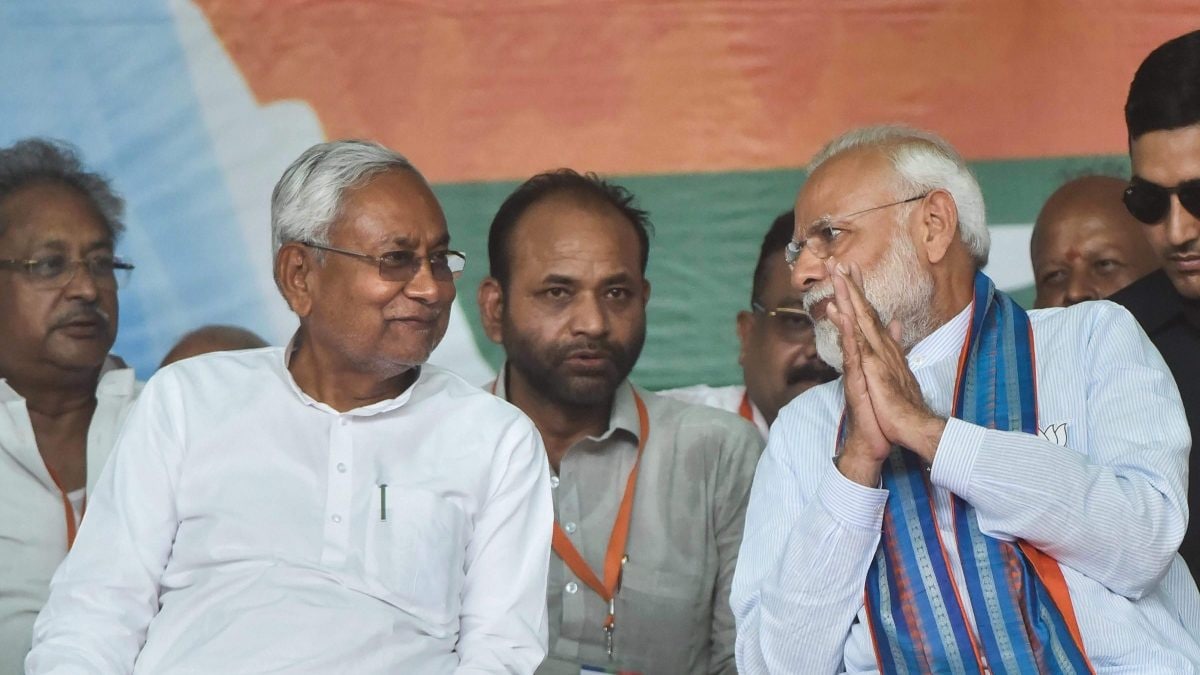On November 23rd, the University of Massachusetts football team played the University of Georgia. It was expected to be less of a game than a slaughter: Georgia was favored by bookmakers to win the game by more than seven touchdowns. The team, which is ranked seventh, has won two out of the past three national championships. UMass, which came into the game with a 2–8 record, was without its usual starting quarterback and had just fired its head coach.
College-football scheduling has an element of farce. Imagine the Yankees playing a series against the Rocket City Trash Pandas, the Double-A affiliate of the Los Angeles Angels. (Maybe it’s not so hard to imagine—the Yankees do play the Chicago White Sox.) But this kind of matchup happens all the time in college football. When Kent State played the University of Tennessee, in September, the score was 63–0 at halftime. (The final score was 71–0.) This season, Ohio State beat Akron and Western Michigan by a combined score of 108–6. These are known as guarantee games, or, more commonly, “cupcakes.”
As a rule, fans hate cupcakes. No one wanted to see the University of Alabama beat up on Mercer in November, the week after a statement win over L.S.U. Even Nick Saban, Alabama’s legendary former coach, has decried the easy wins. The main reason for guarantee games is the same thing that governs most things in college football: money. Georgia paid UMass $1.9 million to come to Athens and play at Sanford Stadium.
UMass needed the cash. That $1.9 million represented around a third of the revenue the football team brought in this season, the school’s athletic director, Ryan Bamford, told me. That amount is more than double what the team’s television contract accounts for. (The football program generates only around two-thirds of its eleven-million-dollar budget; the rest is provided by the university, partly through student fees.) Georgia, meanwhile, has athletics revenues of more than two hundred million dollars.
This is how the system works: there are buyers and sellers, and the buyers are usually sellers, too. Georgia needs home games to fill out its schedule. It wants to accumulate wins. It wants a chance to play some of its backups in a low-stakes but real game situation. To Georgia, the cost of guarantee games is negligible: its coach, Kirby Smart, has a salary bigger than UMass’s entire budget. For UMass, guarantee games help pay for the not-insignificant cost of the charter and lodging for the team—not to mention helmets, food, insurance policies, staff salaries, and the other fixed costs any football team has to bear. They can also offer valuable national advertising for the school. This season, UMass actually played three teams in the mighty Southeastern Conference, including Georgia, to help fund its expenses.
UMass is one of the few independents in the upper-tier Football Bowl Subdivision (F.B.S.), though next season it will be joining the Mid-American Conference, which is right around the middle of football’s vast ecosystem. Bamford hopes that the move will lessen the school’s dependence on guarantee games, since its schedule will become more predictable with conference games and the school will receive a share of the M.A.C.’s media-rights deal with ESPN. The goal is to have one team from the four big conferences, the so-called Power Four, on the schedule. But UMass doesn’t only receive money for games—it pays for them, too. This season, the school paid a few hundred thousand dollars to two teams in the lower-tier Football Championship Subdivision (F.C.S.), Wagner and Central Connecticut, to travel to Amherst for UMass home games. Those two games happen to be the team’s two wins.
There were at least sixty guarantee games played between teams in college football’s highest subdivision, this year, with seventy-five million dollars in total payouts, according to the Associated Press. But this kind of arrangement is “super common all the way down,” Matt Brown, a journalist who is the founder and publisher of Extra Points, an e-mail newsletter focussed on the business of college athletics, told me. Departments with all kinds of budgets engage in buying and selling games. Most teams compete as part of conferences, which fixes a certain number of matchups. (S.E.C. teams play eight conference games, for instance; Big Ten teams play nine. Those games are based on rotation and decided by the league offices.) Scheduling the rest of the games is a kind of art. Some games are what’s known as home-and-home series—teams take turns playing home and away, most often without money exchanging hands. Athletic directors target a certain strength of schedule. Then finances come into play. Departments need to fund their expenses, which they do get from selling games to richer teams. They consider logistical factors, like the distance between a stadium and an airport. Having competitive games on the schedule is a factor, too. Cupcake games can be risky for schools, and not only for the team that might find itself losing 63–0. “If you’ll allow me to use the industry-specific term here, they’re all dogshit,” Brown said, of the quality of the games, “and people won’t want to go.”
To find the right teams for non-conference games, athletic directors turn to Dave Brown, a former ESPN executive who was, for many years, in charge of college-football programming. Brown left ESPN in 2015 to create Gridiron, a program that allows schools to post and search for opponents, filtering for certain factors—Tinder for college football. All hundred and thirty-five F.B.S. teams use Gridiron; in the F.C.S., a hundred and twenty nine out of a hundred and thirty. (The lone holdout is Columbia University.) Before I met Brown, I thought of him as a matchmaker of sorts, like Yente in “Fiddler on the Roof.” But Brown turns out to be an amiable businessman who identified a market inefficiency. His biggest role, he says, is to give schools “every possible option, and they can decide.” In addition to overseeing the online platform, he keeps a running tally of athletic directors’ various needs. “I probably talk to him once a week,” Bamford, the UMass athletic director, told me.
Brown occupies a curious position in the vast industry of college football—both at the center of it and incidental to the massive changes wrought by conference realignment. Sometimes, he helps facilitate a meeting that ends up having national-championship implications—such as when Cincinnati beat Notre Dame in 2021. That win gave the Bearcats—who play in a less competitive conference than the usual contenders—some credibility, and Cincinnati ended up being the first team from the so-called Group of Five to make the playoffs in the four-team era. But Brown tends to downplay his insider status. He learned that U.C.L.A. and U.S.C. were leaving the Pac-12 and heading to the Big Ten at the same time as the public did, he told me. He saw an e-mail announcing the decision, went into Gridiron, and switched the schools over to the Big Ten. “And that was that,” he said.
As teams continue to shuffle and the number of top conferences continue to contract, the scheduling process may also undergo some changes. There has already been talk of increasing the number of high-profile matchups, which are more attractive to the television networks that are paying schools billions of dollars. And, as a new athlete-compensation model emerges, following a series of court cases that have tested the limits of the N.C.A.A.’s refusal to pay players, it may be that schools like Georgia are less profligate with the money they spend on cupcake games. Some of the changes are inevitable. But some will have the effect, inevitably, of smoothing away the local weirdness of college football, those unexpected dashes of local custom, romanticism, and hope. Guarantee games, after all, aren’t quite guaranteed wins. And there is no bigger appeal, however remote, than the possibility of a real upset. In early September, Northern Illinois stunned Notre Dame, which was ranked fifth at the time, 16–14. Northern Illinois not only came home with the win but with a check for $1.4 million.
“Our young men in the program love playing these games,” Bamford told me not long before UMass played Georgia. Several of the players arrived in Amherst through the transfer portal, looking for playing time after sitting on the bench on better teams, he said. They want the shot to show the bigger football schools, and undoubtedly bigger audiences, how well they can compete. (Bamford did not add that some of his own players might be looking to show their skills to Power Four coaches, with an eye toward transferring from UMass.) Some, hoping to make it to the N.F.L., know they’ll have a rare opportunity to show scouts what they can do against future N.F.L. draft picks. And the players take it seriously: they want to win.
UMass took the field against Georgia on November 23rd, at midday in Athens. It was Senior Day, and Georgia needed a strong showing to keep its national-title hopes alive. But UMass began the game with a ten-play touchdown drive. It dominated the first quarter, and even much of the first half. Georgia was missing tackles; UMass finished the first half with a hundred and sixty-six yards of rushing, against a team that had given up, on average, only a hundred and fourteen a game. Georgia scored on the final drive of the half, and the Bulldogs were up two scores, but the crowd was quiet, anxious. UMass was not supposed to be in this game. “I hate to say it, but I don’t know if our guys were as energized as their guys were,” Smart, Georgia’s coach, said later.
The second half was a return to reality. There was a fumble recovery for a Georgia touchdown. There was a kick that sailed right. UMass couldn’t match Georgia for talent, and Georgia almost scored at will. The team that was supposed to win big won big: 59–21. Energy is nice, but it doesn’t count on the scoreboard. There are haves and have-nots, and the haves usually win. ♦







